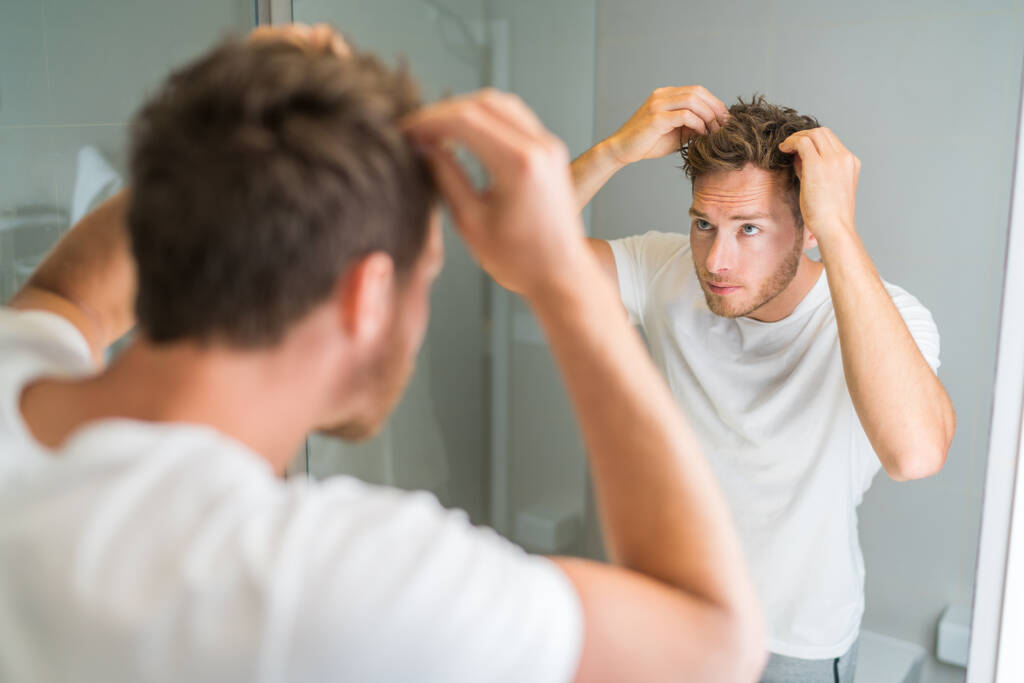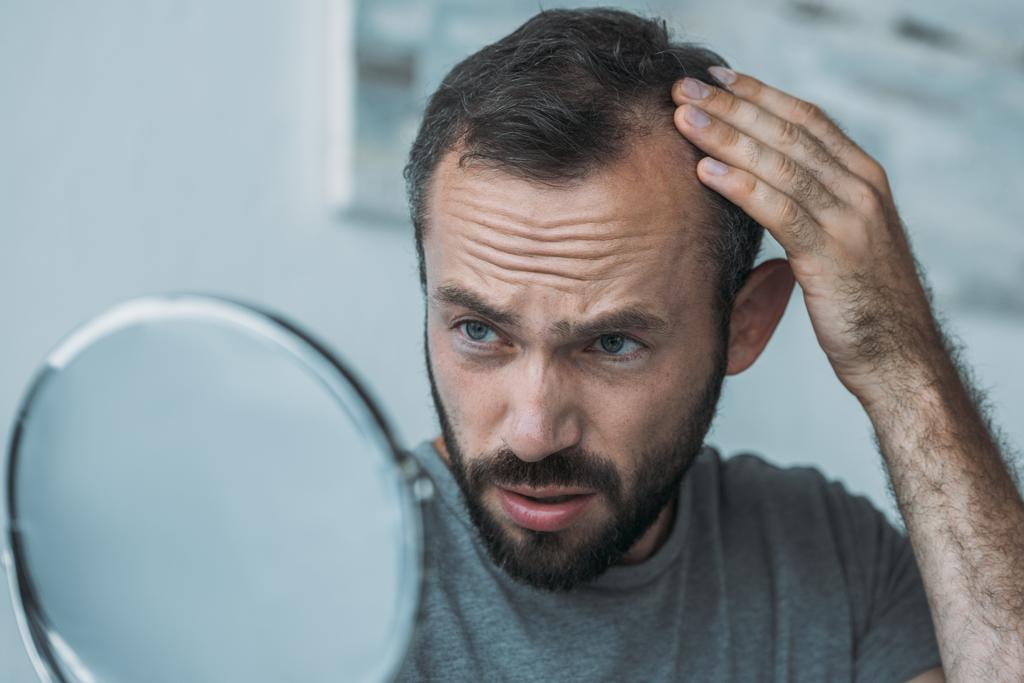Hair has long been a symbol of youth, vitality, and attractiveness in many cultures around the world. It’s no wonder then that the phenomenon of male pattern baldness, also known as androgenetic alopecia, can be a source of concern and distress for many men. While it’s a common issue, there’s a lot more to male pattern baldness than meets the eye. In this blog post, we’ll explore the science behind male pattern baldness, its causes, and the various solutions available, including the role of hair cosmetics products in managing this condition.
Understanding Male Pattern Baldness
Male pattern baldness is a progressive hair loss condition that primarily affects men, though it can also occur in women. It typically follows a specific pattern, characterized by a receding hairline and thinning of hair at the crown of the head. This pattern is often described using the Norwood scale, which classifies the extent of hair loss.
The Science Behind Male Pattern Baldness
The root cause of male pattern baldness lies in genetics and hormones. Here’s a simplified explanation of how it works:
Genetics: Male pattern baldness has a strong genetic component. If your family has a history of baldness, especially on your maternal side, you are more likely to experience it yourself. Specific genes influence the susceptibility to hair loss, and their expression is inherited.
Hormones: The hormone dihydrotestosterone (DHT) plays a key role in male pattern baldness. DHT is a derivative of testosterone and is known to shrink hair follicles. In individuals genetically predisposed to baldness, the hair follicles become sensitive to DHT, leading to miniaturization of the follicles. This means that the hair produced by these follicles becomes progressively finer and shorter, eventually leading to hair loss.
Causes of Male Pattern Baldness
Hormonal Imbalance: As mentioned earlier, the presence of DHT in higher amounts can trigger hair loss in individuals with a genetic predisposition. Hormonal changes due to aging can contribute to an imbalance that favors the production of DHT.
Age: Male pattern baldness often becomes more apparent as men age, with most cases starting in their late 20s to early 30s. The rate and extent of balding can vary from person to person.
Other Factors: While genetics and hormones are the primary culprits, other factors such as stress, poor nutrition, and certain medical conditions can accelerate hair loss or exacerbate the condition.
Solutions for Male Pattern Baldness
Medications
There are two FDA-approved medications for treating male pattern baldness. Minoxidil (commonly known as Rogaine) is a topical solution that can promote hair growth and slow down hair loss. Finasteride (sold as Propecia) is an oral medication that inhibits the conversion of testosterone into DHT, reducing its impact on hair follicles.
Hair Transplantation
Hair transplantation is a surgical procedure that involves transplanting hair follicles from one part of your body (usually the back of the head) to the balding areas. This technique provides a permanent solution to baldness, but it can be expensive and requires a recovery period.
Low-Level Laser Therapy (LLLT)
LLLT is a non-invasive treatment option that uses low-level lasers or LED devices to stimulate hair follicles and promote hair growth. It can be used in combination with other treatments.
Hair Cosmetics Products
Hair cosmetics products play a significant role in managing male pattern baldness. These products include shampoos, conditioners, and topical treatments designed to improve the appearance and health of existing hair. They can make hair look fuller and thicker, providing a temporary solution to the aesthetic concerns associated with hair loss.
The Role of Hair Cosmetics Products
While hair cosmetics products cannot reverse the genetic and hormonal factors that cause male pattern baldness, they can offer several benefits for individuals dealing with this condition:
Thickening and Volume
Many hair cosmetics products are formulated to add thickness and volume to existing hair, making it appear fuller and denser. These products often contain ingredients like biotin, panthenol, and keratin, which can strengthen and fortify hair strands.
Nourishment and Conditioning
Properly nourished and conditioned hair is less prone to breakage and looks healthier overall. Hair cosmetics products, such as specialized shampoos and conditioners, can provide essential nutrients to the hair and scalp, promoting a healthier appearance.
Concealment
Some hair cosmetics products, like hair fibers and concealers, can temporarily hide thinning areas by adhering to existing hair and creating the illusion of thicker coverage. These products can boost confidence and improve the appearance of hair.
Styling and Control
Hair styling products, such as volumizing mousses and hair sprays, can help individuals with male pattern baldness achieve the desired hairstyle while adding volume and hold to their hair.

Male pattern baldness is a common condition with genetic and hormonal roots. While it cannot be completely prevented or reversed, there are various solutions available to manage it. Medications, hair transplantation, low-level laser therapy, and hair cosmetics products all play a role in helping individuals cope with the physical and emotional aspects of hair loss.
Hair cosmetics products, in particular, offer a range of benefits, from thickening and volume enhancement to nourishment and concealment. When used in conjunction with other treatments and lifestyle changes, these products can significantly improve the appearance of hair and provide a sense of confidence and well-being to those dealing with male pattern baldness. Ultimately, the choice of treatment should be based on individual preferences, goals, and consultation with a healthcare professional or dermatologist.

